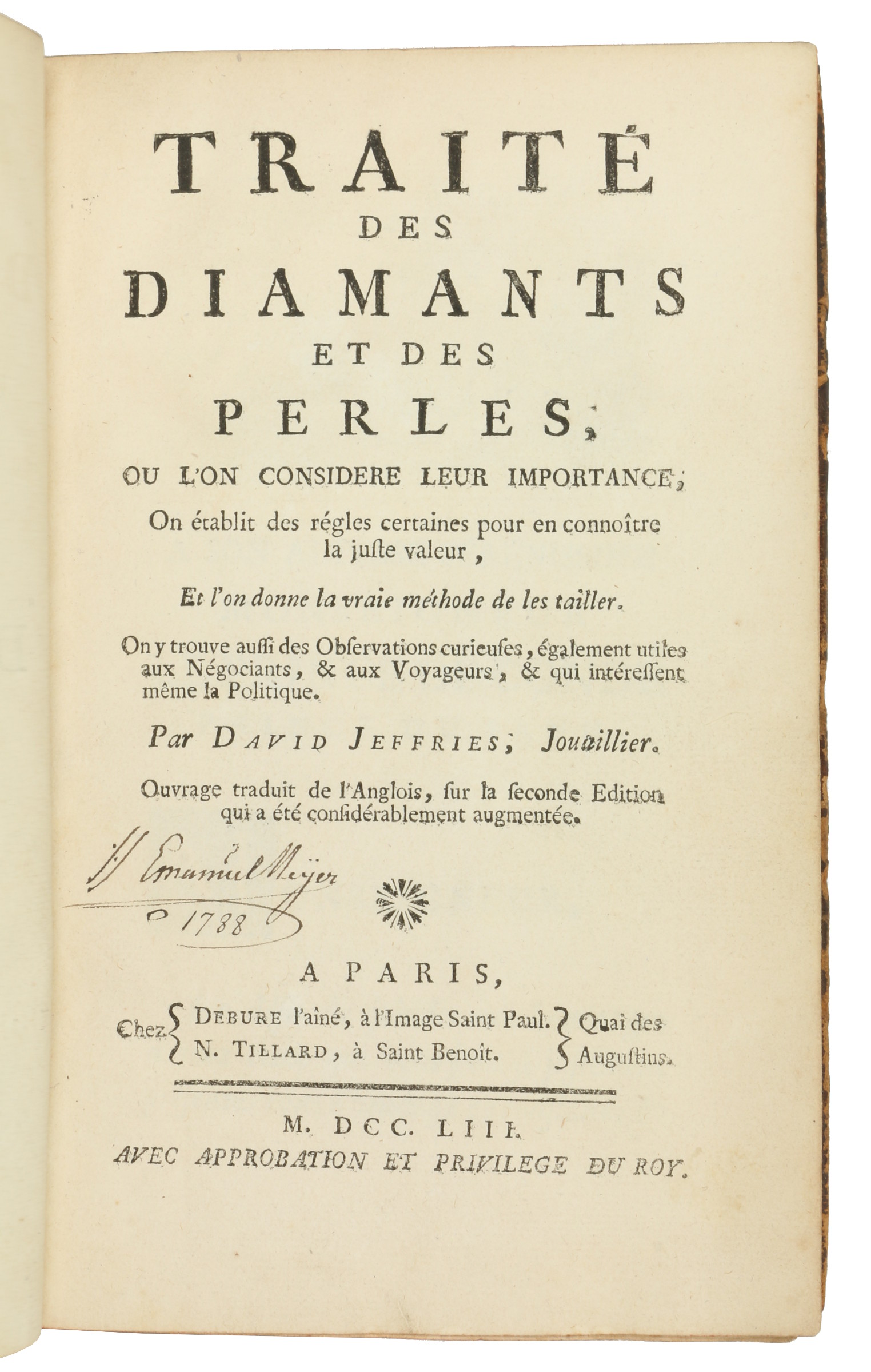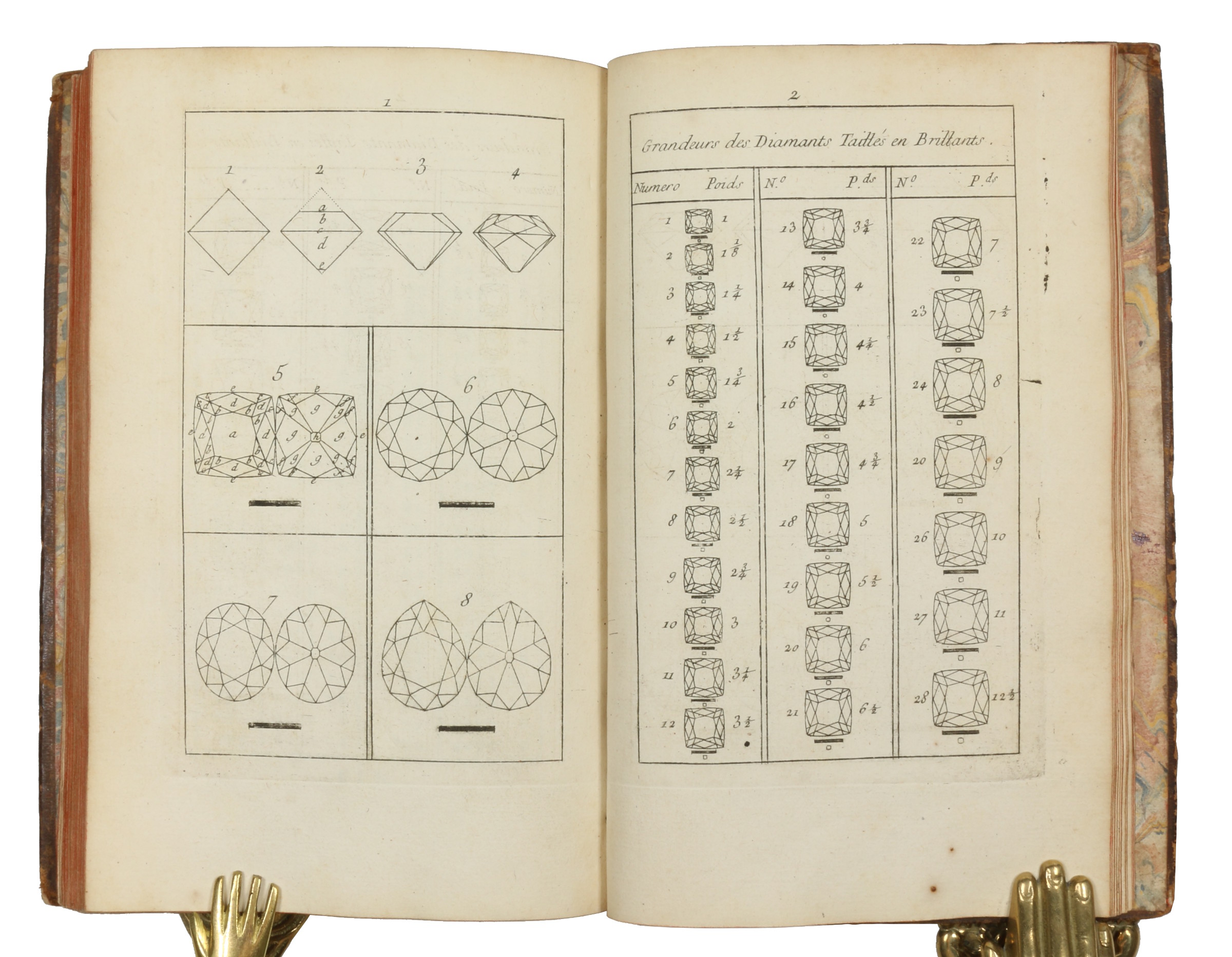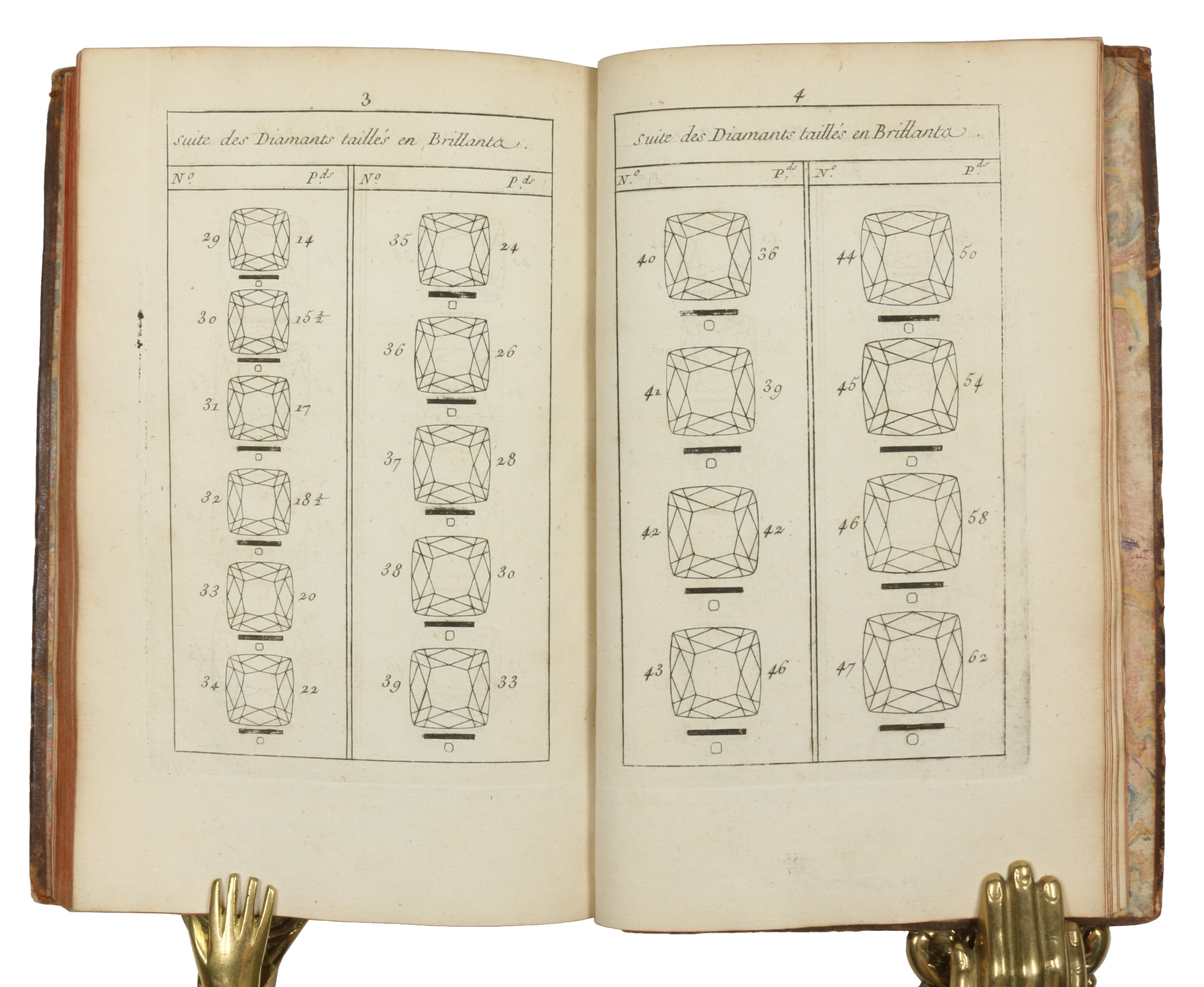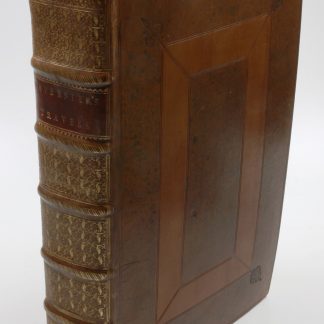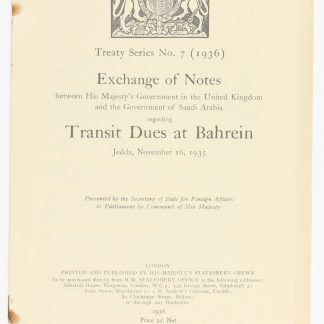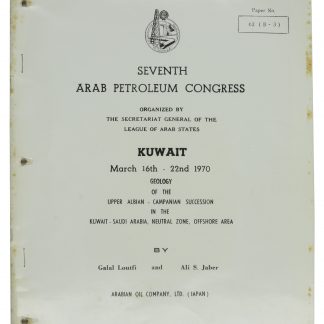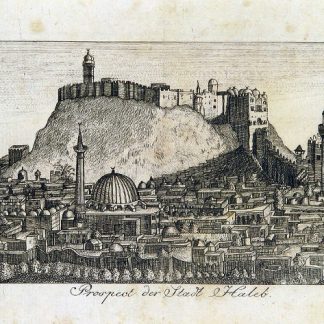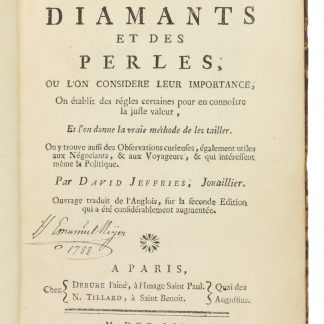First explicit statement of the principles of pearl valuation
Traité des diamants et des perles, où l'on considère leur importance, on établit des règles certaines pour en connoître la juste valeur.
8vo. (8), XXXXV, (1), 104 pp. With engraved dedicatory headpiece and 10 engraved plates (some depicting cuts of diamonds) and tables. Contemporary French mottled calf with red giltstamped label to prettily gilt spine. Marbled endpapers. All edges red.
€ 6,500.00
First edition in French of this early book describing "how diamonds and pearls can be evaluated on the basis of the factors of size (or weight) and style of cut" (Sinkankas). The London jeweller Jeffries is the first author to provide "a clear statement of the principle that the value of pearls should be calculated to the square of their weight [...] This principle is implicit in the valuation tables given by earlier authors, including Tavernier and others, but Jeffries is the first to state it explicitly. At the back of his book, he provides tables allowing the calculation of the value of individual and batches of pearls of different size or quality. This is effectively a 'chau' book, as used by merchants in the Gulf and India until the mid-20th century, and fulfils exactly the same function" (Carter).
"The text explains the [diamond] cutting procedure, how the evaluation rules were derived, the importance of imperfections and flaws as affecting price, notes on rough diamonds [...] and finally, a somewhat similar procedure for the valuation of pearls, with highest values accorded to pearls of closest approach to spherical perfection, luster, etc. The mathematical rule used for the pearl is known as the 'square of the weight' multiplied by a per-carat base price" (Sinkankas).
This French edition is much scarcer than the expanded second English edition, on which it is based. It is dedicated by the translator (the Royal librarian Chappotin S. Laurent) to the sixteen-year-old Louis Joseph de Bourbon, prince de Condé, on the occasion of his marriage to Charlotte de Rohan.
Professional repairs to hinges and corners; in all a fine copy. Provenance: Handwritten ownership of the Brussels jeweller Emanuel Meyer, dated 1788, to title-page. 19th century engraved bookplate of Thomas Westwood to pastedown. Latterly removed from the Library of the Birmingham Assay Office, one of the four assay offices in the United Kingdom, with their library stamp to the second flyleaf.
Sinkankas 3198. Cf. Carter, Sea of Pearls, p. 83, 125f., 251. Goldsmiths' 8500. Hoover 453. Roller/G. II, 10.

